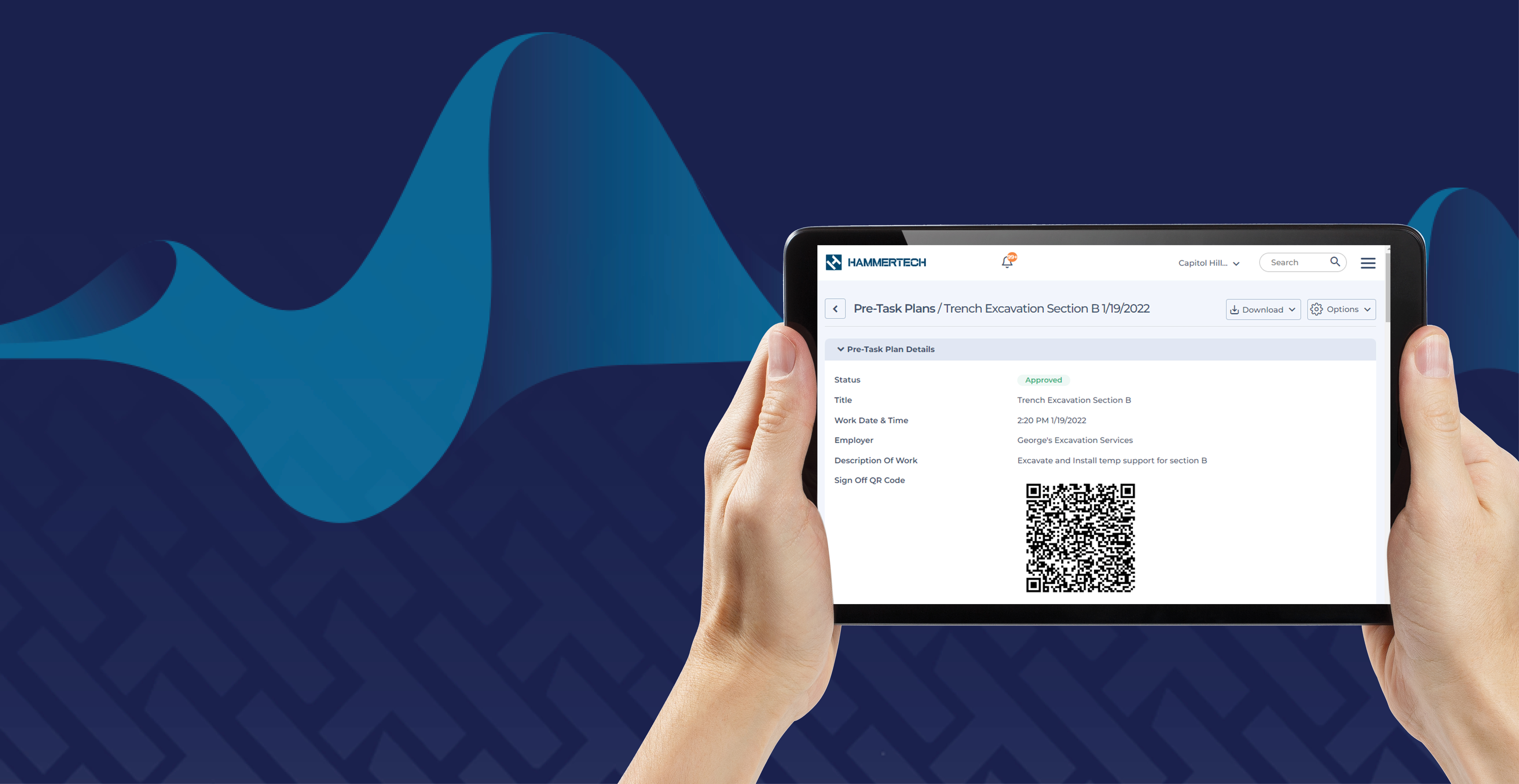As one of the most hazardous industries, construction work can pose significant risks to workers' health and safety. The high incidence of workplace accidents and injuries can result in lowered morale, decreased productivity, increased costs, and even fatalities. One way to reduce workplace incidents is by requiring all subcontractors to complete a Job Hazard Analysis (JHA) before commencing work onsite.
We have laid out best practices for JHAs in this guide, including why they are crucial for construction, how they can help promote safety onsite, and even explore how software can assist in managing JHAs.
What Is Job Hazard Analysis (JHA)?
JHA is a systematic process that aims to identify potential hazards in a job or task and implement measures to control or eliminate those hazards. The process involves breaking down a job or task into steps, identifying potential hazards associated with each step, and developing controls to prevent or reduce those hazards.
By completing a JHA, employers can ensure that they have identified all potential hazards and have taken the necessary steps to protect workers from harm.
JHA vs. JSA – Are They the Same Thing?
Job Hazard Analysis (JHA) and Job Safety Analysis (JSA) are both risk assessment tools used in workplace safety programs. While the terms JHA and JSA are often used interchangeably, they do have some subtle differences.
Similarities between JHAs and JSAs:
-
-
Both are used to identify potential hazards and evaluate the risk associated with each task in a job.
-
They both aim to improve safety in the workplace by providing a systematic approach to identify and mitigate risks.
-
Both methods involve breaking down a job into its component tasks and analyzing each task for hazards.
-
Differences between JHAs and JSAs:
-
-
Some organizations use the term JHA to describe a hazard assessment process that is used for non-routine tasks or tasks with a higher level of risk, while they use JSA for routine tasks. However, this is not a universal practice and is not always the case.
-
Fun fact: In general, the primary difference between JHAs and JSAs lies in their origin. JHA was developed in the 1970s by the Occupational Safety and Health Administration (OSHA) as a systematic approach to identify and evaluate hazards associated with a job or process. On the other hand, JSA was developed by the military in the 1940s to reduce the number of accidents during World War II. While their origins may differ, the principles and methods are essentially the same.
Check out this article if you’re wondering what the difference is between a JHA and a PTP.
Why Is JHA Important in the Construction Industry?
Construction is known for its high-risk nature—workers are exposed to a range of hazards such as falls, electrical shocks, and chemical exposures. Great planning nets great results and not just safety but quality benefits too.
JHAs provide general contractors with the confidence prior to work starting that subcontractors have a detailed plan in place that identifies potential hazards and controls. Trade partners are experts in their craft and often best placed to provide detailed knowledge around risks and resources, training, tools, and protections required to safely complete their work and prevent injuries.
Additionally, JHAs can help employers comply with the OSHA regulation OSHA 29 CFR Part 1910.132. OSHA requires employers to assess the workplace for hazards that necessitate the use of personal protective equipment (PPE) and select the necessary PPE. JHAs are not mandatory for other construction activities but OSHA strongly recommends them.
Tips for Simplifying the JHA Process
-
-
Get buy-in from leadership, subcontractors, and the workforce. You want this to be a shared responsibility and valuable process that reduces risk.
-
Make a template available. Provide an easily accessible template for project teams and subcontractors as part of project start-up.
-
Prioritize high-risk work first.
-
We’ve developed a JHA template to get you started that builds upon the OSHA JHA guidance for completing hazard assessments.
![]()
How to Conduct a JHA
To conduct a JHA, general contractors should ensure subcontractors follow a systematic process. JHA expectations should be included in pre-work safety orientations and even in contractual agreements. OSHA’s JHA template is a good place to start in setting up a standard procedure. Here are the steps involved in completing JHAs:
1. Choose the job or task to be analyzed:
-
-
Consider selecting jobs or tasks that have a high risk of injury or illness, or those with a history of accidents or incidents. JHAs are also helpful before a new scope of work begins or a new piece of major equipment arrives onsite.
-
Take into account the level of complexity and the number of steps involved in the job or task.
-
2. Break the job or task down into steps:
-
-
Break down the job or task into individual steps or tasks to ensure that all hazards are identified.
-
Record each step or task on the JHA form or template.
-
3. Identify potential hazards:
-
-
Identify potential hazards associated with each step or task by considering past accidents, incidents, or near misses.
-
Consider potential hazards related to the equipment, tools, materials, and environment. Use not only the experience of your team to determine hazards but also read product information and safety data sheets (SDS).
-
4. Determine the severity and likelihood of each hazard:
-
-
Evaluate the severity and likelihood of each hazard to determine the overall risk level.
-
Use a risk matrix or other risk assessment tool to help prioritize hazards based on severity and likelihood.
-
5. Identify controls for each hazard:
-
-
Identify controls for each hazard that will eliminate or reduce the risk level to an acceptable level.
-
Consider using the hierarchy of controls, which prioritizes elimination or substitution, followed by engineering, administrative, and personal protective equipment controls.
-
6. Submit for approval before starting work:
-
-
A representative from the general contractor reviews the JHA and provides comments or accepts the subcontractor’s proposals to ensure it is site-specific and supports your safety standards.
-
7. Implement controls:
-
-
Use the JHA as the source of truth for work method and implement the identified controls for each hazard, making sure they are effective and feasible.
-
Ensure that workers are trained on the proper use of controls and that the controls are maintained and inspected regularly.
-
8. Review and update the JHA:
-
-
Regularly review and update the JHA to ensure that it remains current and effective.
-
Consider reviewing the JHA whenever there are changes to the job or task, equipment, or work environment, or when incidents or accidents occur, and make sure that workers are aware of the changes.
-
Making the Most of Your JHAs
Now that you’ve got approved JHAs from your trade partners, it’s time to put them to use. Before starting work, all team members should review and be trained on the JHA relevant to the scope and subcontractor they’ll be working for. It’s also important to capture this training and ask them to sign the JHA document.
The JHA also supports other processes like pre-task plans and safety audits. It empowers teams to make detailed daily plans which improves hazard recognition. For safety audits, it means you can assess whether work is being conducted safely and as planned.
With the steps outlined in this blog post, you can easily develop and implement an effective JHA program for your construction site. Let's work together to ensure everyone goes home safely at the end of the day.
Are you struggling to see if each worker has been trained on a JHA?
HammerTech makes it easy to close training gaps and run JHAs with FREE software for subcontractors.



%20GIF.gif?width=200&name=HammerTech%20Intelligence%20(HTI)%20GIF.gif)

.png)



